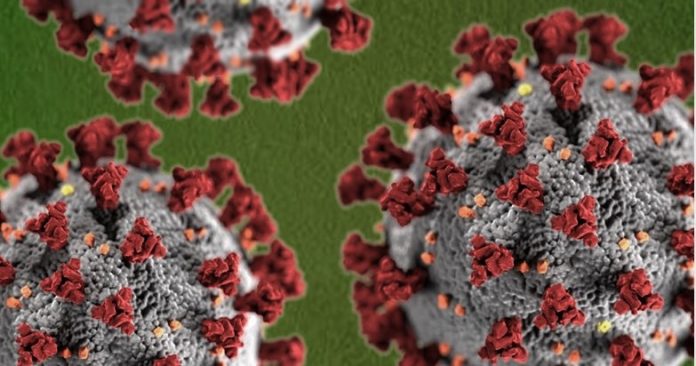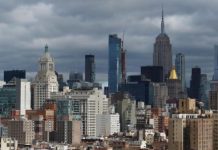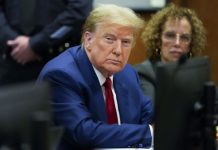April 22 (UPI) — New York Gov. Andrew Cuomo and New York City Mayor Bill de Blasio on Wednesday announced plans for mass contact tracing programs to track down and isolate people exposed to the coronavirus.
Cuomo said the first-of-its-kind effort is aimed at preventing a resurgence of the outbreak. It will be seeded by a $10 million contribution from former New York City Mayor Michael Bloomberg and be coordinated with the neighboring states of New Jersey and Connecticut.
The program, which is to be coordinated with Johns Hopkins University, will require “an army” of contact tracers, Cuomo said.
“You cannot trace somebody within the boundaries of New York City,” he said. “We’ll coordinate everyone. This is a monumental undertaking.”
The announcement came as the state reported another 474 deaths from COVID-19. They brought New York’s total death toll to more than 15,000.
As they have throughout the week, the numbers of hospitalizations and admissions to intensive care units at the U.S. epicenter of the outbreak continued a “gentle decline.” New York’s total caseload was nearing 252,000 as of Wednesday.
“We are going down — how fast we’ll find out but we’re going down,” Cuomo said. “This is a profound moment in history. Our actions shape our future. If we get reckless today, we’ll suffer the consequences tomorrow.”
De Blasio spoke earlier Wednesday about the city’s own plans for contact tracing, called “Test and Trace,” under which both functions will be greatly expanded.
The mayor said “hundreds of thousands” of more tests per day need to be conducted before he can think about relaxing social distancing requirements.
“Every individual who contracts this disease, following up with them and making sure they’re interviewed about the people in their life and then following up with those people,” he said of the contact tracing element. “Continue following all the way through.”
De Blasio warned that thousands of people in the city may need to be placed in isolation once the contacts of coronavirus carriers are identified through tracing.
There have so far been more than 826,000 coronavirus cases in the United States and more than 45,100 deaths, according to Johns Hopkins. The school said more than 4.1 million tests have been performed to date.
In Santa Clara, Calif., county medical officials announced that autopsies have shown the first coronavirus-related death in the United States occurred in early February — weeks earlier than previously believed.
The Santa Clara County Medical Examiner-Coroner said a new autopsy report showed a resident there died on Feb. 6 after picking up COVID-19.
Previously, the earliest known coronavirus-related death in the United States was recorded Feb. 29, a man in his 50s in Washington state.
The coroner said another Santa Clara resident died from COVID-19 on Feb. 17. In both cases, she received confirmation from the Centers for Disease Control and Prevention.
The first positive test on a U.S. patient was recorded in Washington state on Jan. 22. That person had traveled to Wuhan, China, which was the initial global epicenter for the disease. Santa Clara County forms part of the famous Silicon Valley technology hub, which has ties to China.
In Sacramento, Calif., state health officials said they are now expanding the scope of who should be tested to include some residents who aren’t showing typical coronavirus symptoms. They issued the new guidelines last weekend and are now screening asymptomatic people from “congregate settings,” such as homeless shelters.
It marked the first time that state or local officials in the United States have gone beyond the official U.S. Centers for Disease Control and Prevention guidelines recommending testing for those showing COVID-19 symptoms.
CDC Director Robert Redfield said that if a second wave of the coronavirus disease strikes later this year, it will likely be much more difficult to contain because it would coincide with the start of flu season.
“There’s a possibility that the assault of the virus on our nation next winter will actually be even more difficult than the one we just went through,” he told the Washington Post, adding, “We’re going to have the flu epidemic and the coronavirus epidemic at the same time.”
A scenario in which two respiratory epidemics happened simultaneously would put a tremendous strain on the healthcare system, Redfield said.







